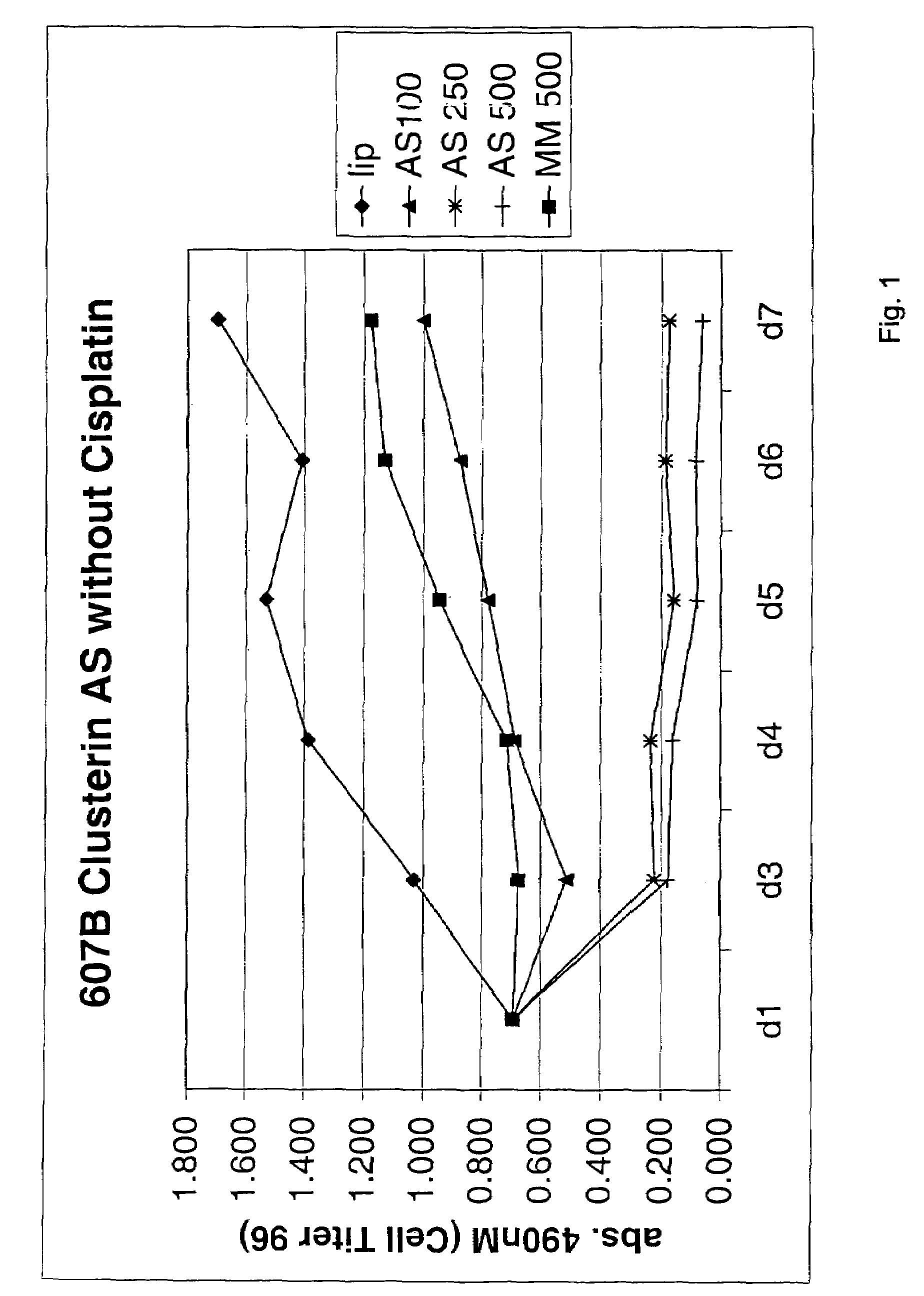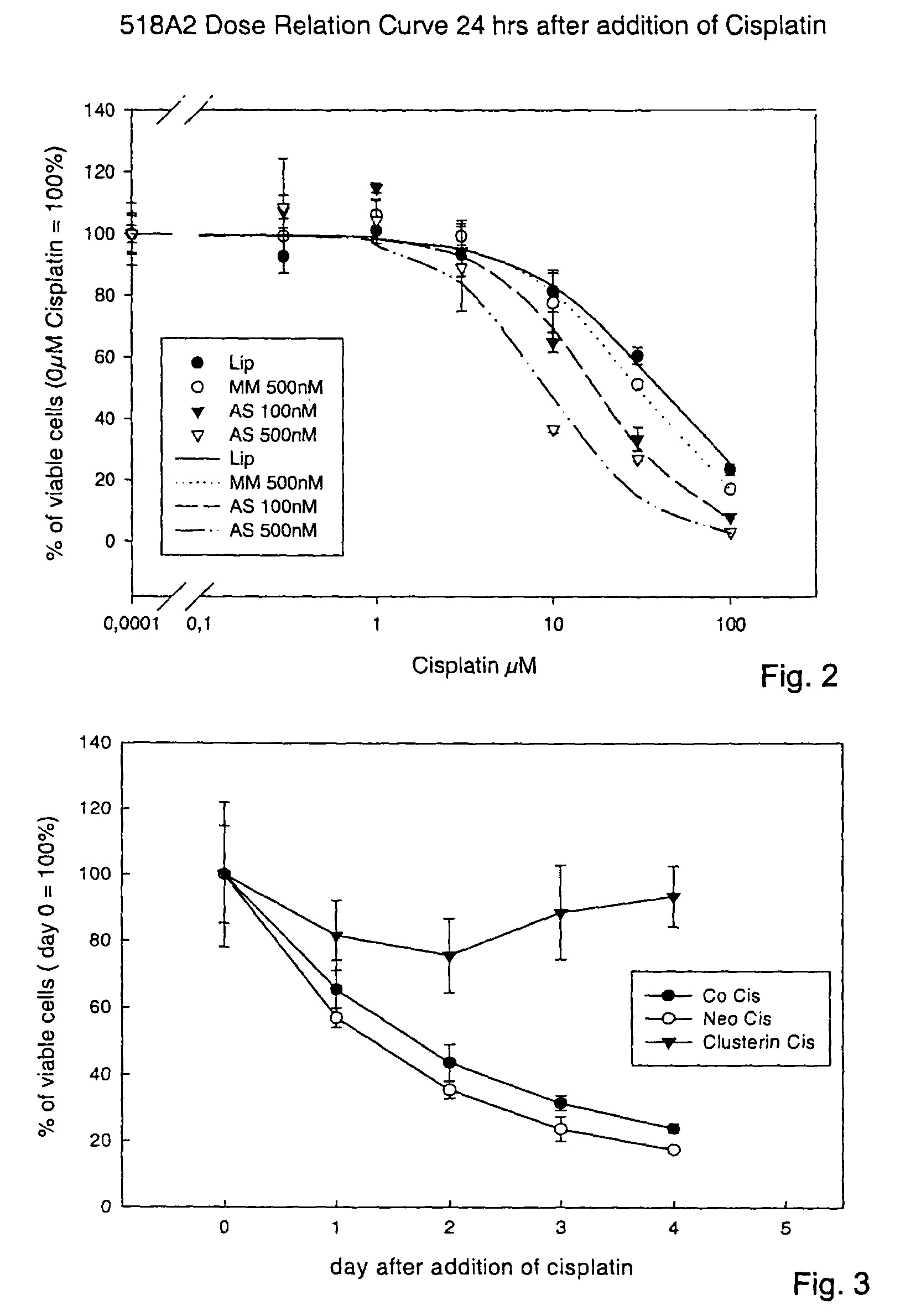Treatment of melanoma by reduction in clusterin levels
a clusterin and anti-melanoma technology, applied in the direction of genetic material ingredients, drug compositions, peptide/protein ingredients, etc., can solve the problems of lncap cells exposed to tnf, apoptosis cell death, and substantial reduction in clusterin expression, so as to reduce the modulate the amount of clusterin expression, and reduce the effect of effective amount of clusterin
- Summary
- Abstract
- Description
- Claims
- Application Information
AI Technical Summary
Problems solved by technology
Method used
Image
Examples
example 1
[0027]Expression of clusterin in two different batches of normal human melanocytes (NHEM 6083 and 2489) and four human melanoma cell lines (518A2, SKMEL-28, Mel-Juso and 607B). Cells were grown in 6 cm dishes and harvested when they were 80-90% confluent. 30 μg of protein per lane was applied onto a 10% SDS-Page gel and probed with a polyclonal goat anti-clusterin antibody. Panceau red stain and an antibody directed against β-actin were used as a loading control. In each case, the antisense inhibitor of clusterin used is based on the advanced antisense chemistry 2′MOE as described in U.S. patent application Ser. No. 10 / 080,794 and has the sequence of Seq. ID. NO. 4.
[0028]FIG. 1 shows the results when 607B melanoma cells were treated with either the antisense oligonucleotide at concentrations of 100, 250 or 500 nM, or a scrambled control at a concentration of 100 nM on two consecutive days. Lipofectin™ (lip) without oligonucleotide was used as a control. Cells numbers in 96 well plat...
example 2
[0031]Mel Juso melanoma cells stably tranfected with either an empty control vector (Neo) or a vector directing overepression of clusterin were grown in medium containing 10 μM cisplatin. Cell survival was measured using the Cell-titer 96 kits from Promega. The results are summarized in FIG. 3. As shown, overexpression of clusterin dramatically enhanced cell survival, or said differently, reduced the effectiveness of the chemotherapy agent.
PUM
| Property | Measurement | Unit |
|---|---|---|
| stability | aaaaa | aaaaa |
| α | aaaaa | aaaaa |
| concentrations | aaaaa | aaaaa |
Abstract
Description
Claims
Application Information
 Login to View More
Login to View More - R&D
- Intellectual Property
- Life Sciences
- Materials
- Tech Scout
- Unparalleled Data Quality
- Higher Quality Content
- 60% Fewer Hallucinations
Browse by: Latest US Patents, China's latest patents, Technical Efficacy Thesaurus, Application Domain, Technology Topic, Popular Technical Reports.
© 2025 PatSnap. All rights reserved.Legal|Privacy policy|Modern Slavery Act Transparency Statement|Sitemap|About US| Contact US: help@patsnap.com


